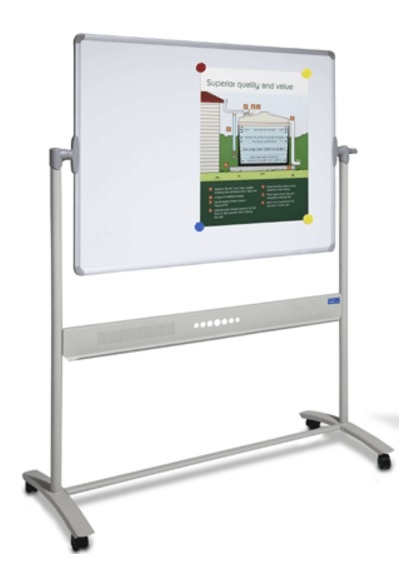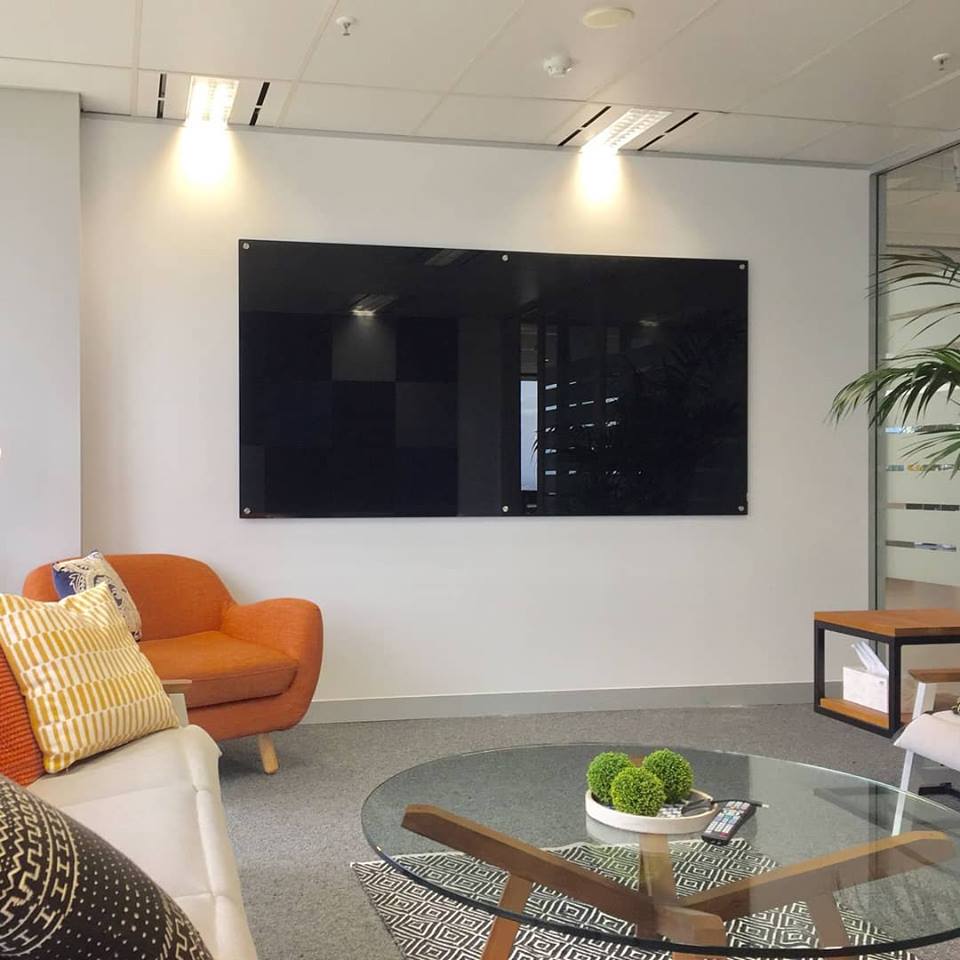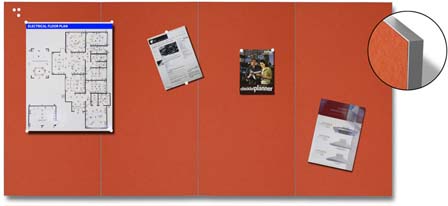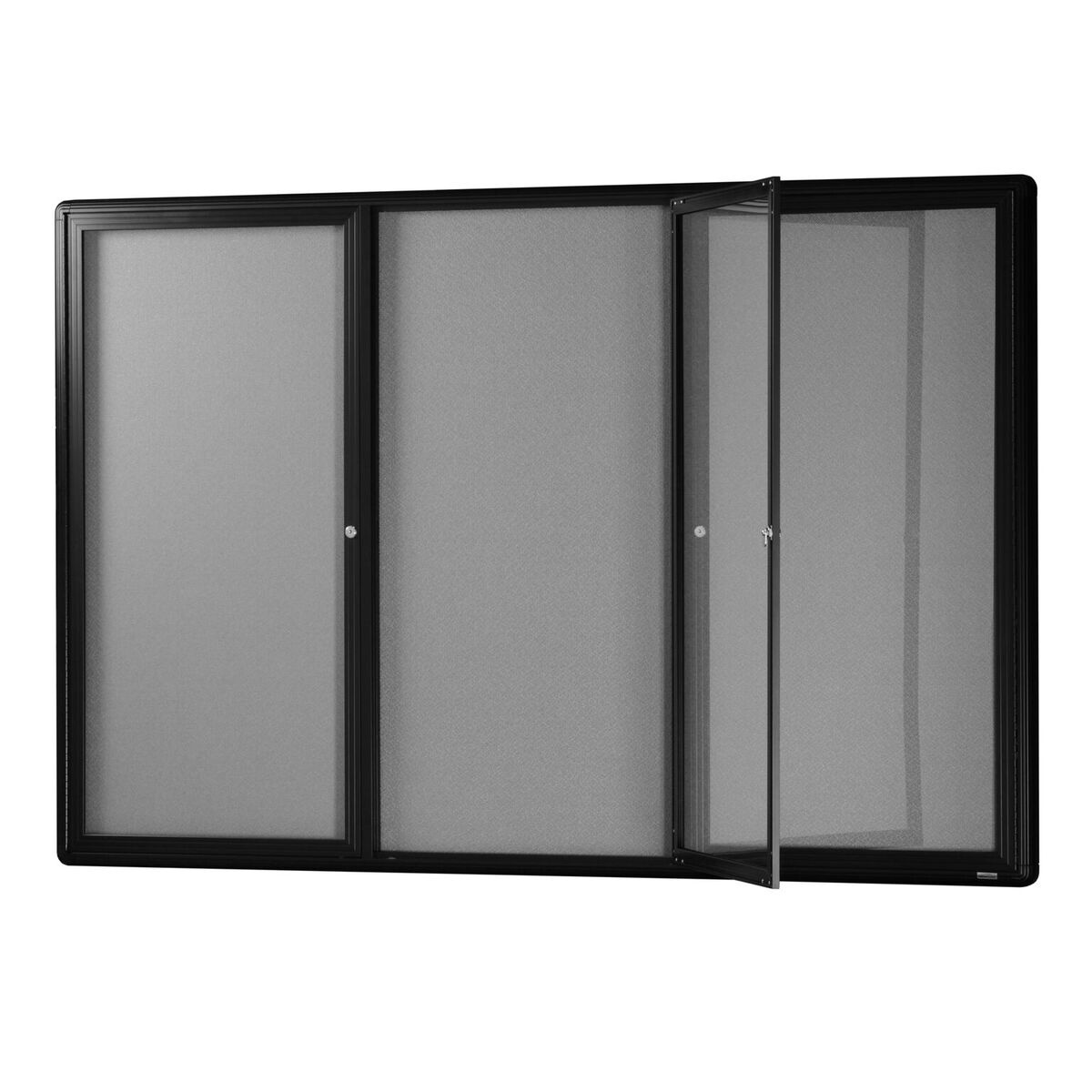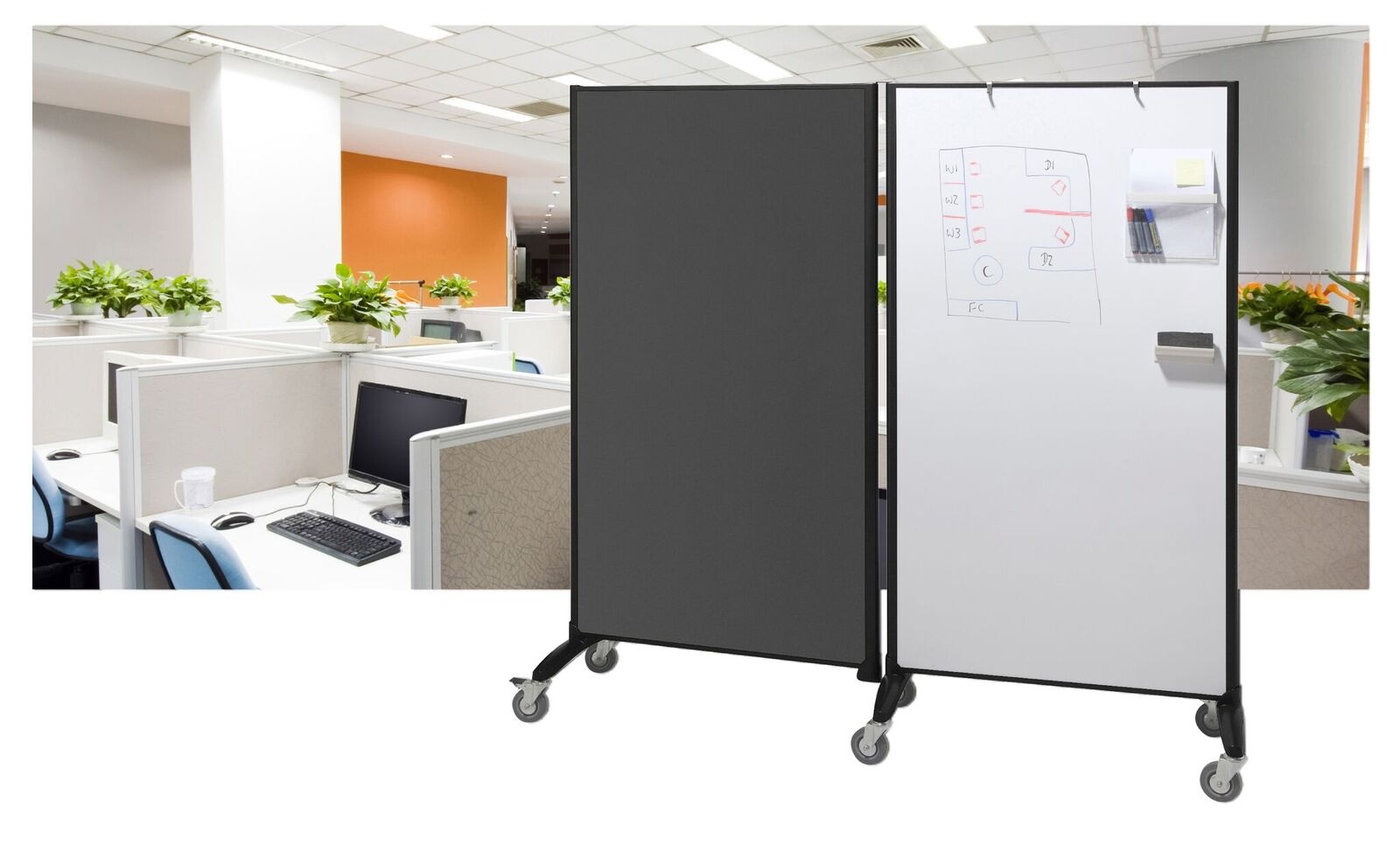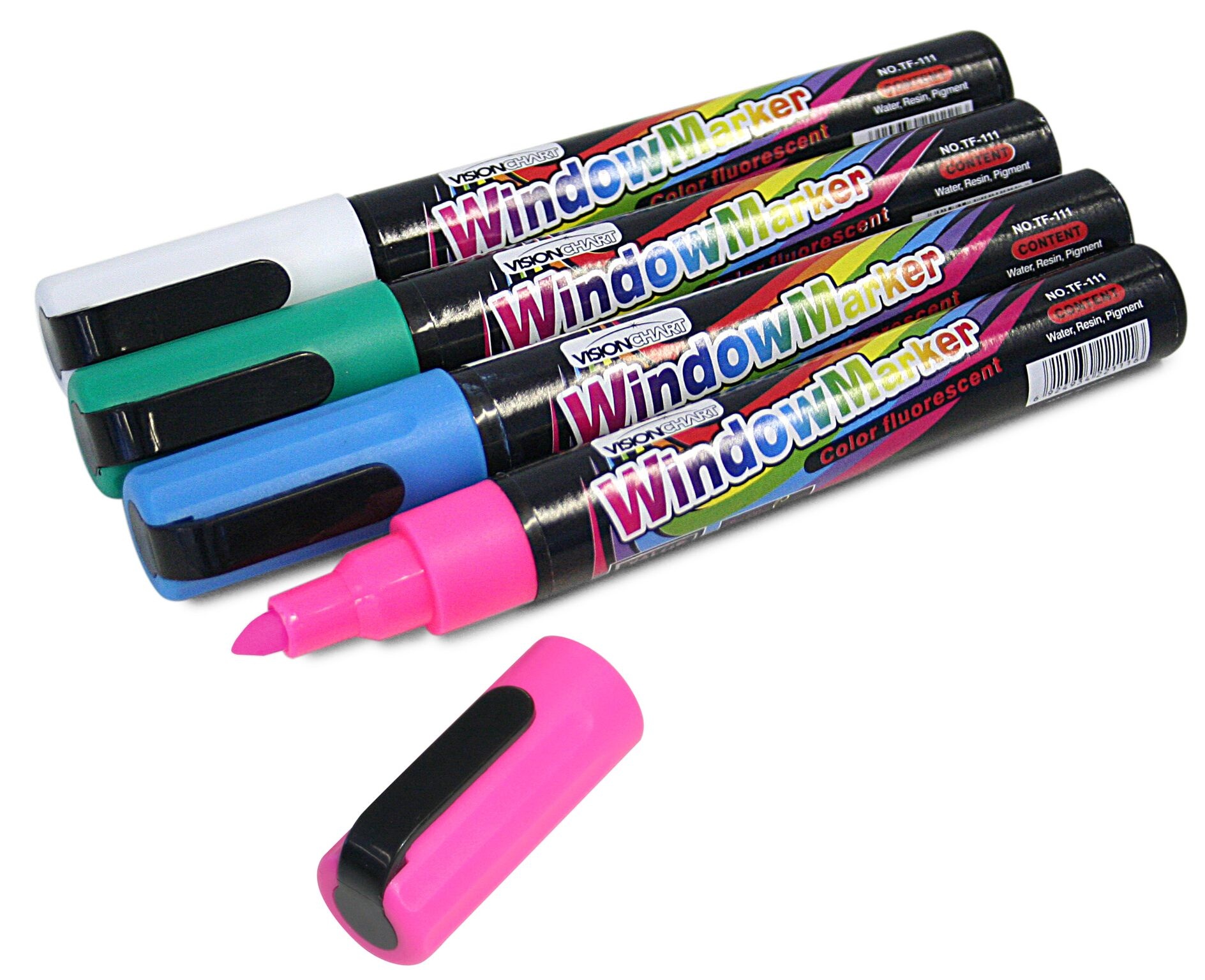Double sided whiteboards offer twice the impact, twice the space and twice the convenience. Find out more with Whiteboards Online.Click here.
Double-sided whiteboards for more dynamic presentations
It is a fair guess to say that anyone who has sat through enough business meetings will have witnessed a PFH - presentation from hell. You may have even given one!
Every PFH stands out in memory, often, paradoxically, because they are so boring. You remember being bored because the presenter stood up there and read their notes verbatim. Sounding like a talking clock, they just go on and on with with a style of delivery that has a hypnotic lack of personality.
You remember looking at the clock or sneaking a peek at your watch. You give your attention back to the presenter for what seems like an entire geological epoch of the Earth, and then you look back to the timepiece. Only 20 seconds have elapsed...
It’s at this point that you start wistfully longing for the comparatively adventuresome life of a coma patient. It shouldn’t be this bad … and it doesn’t have to be.
If only the speaker had planned their presentation how, and not just typed out their presentation what.
Planning a presentation
When you present, you need to achieve two things:
- Give good information
- Ensure the audience absorbs it.
What this means is:
- Great info that no one takes in = failed presentation “the classic PFH”.
- Entertaining yet content-free = failed presentation “the classic razzle-dazzle”.
One way to avoid both paths of failure is to use a double-sided flip whiteboard. The reason?
Audiences are more receptive if you communicate with them rather than speak at them. So, in the case of the PFH from the introduction, the speaker, instead of reading a pre-written document aloud, should have condensed his key ideas to a few points on one side of the whiteboard. Then, at the beginning of his presentation, he can outline - and even amend - the points he’ll address.
Time spent in preparation is also a good opportunity to draw up any detailed visual aids - such as flow charts - that will be referred back to, but which don’t need to be front and centre the whole time.
Further, this gives the audience a sense of structure and direction for proceedings.
During the Presentation
Once the topic introduction is made and everyone knows what will be covered, the speaker can flip the whiteboard to its blank side and dive into the details of his talk . As he goes, he can make scribble notes, draw diagrams and sketch out charts.
The audience, by hearing about the key ideas in a structured yet somewhat extemporaneous way - rather than just hearing a canned spiel - will stay receptive and engaged. And this receptiveness will be heightened if the speaker flips the whiteboard every now and again to let them know where the speech is up to.
The goal is an interactive presentation that explores the idea presented and taps into the knowledge, wisdom and experience of everyone in the room. It’s a brains trust that speaker can use to stress-test concepts, brainstorm answers to tricky problems or simply help THEM understand the idea they are presenting better. There’s nothing better for developing topical excellence than having to explain yourself to smart people who, in all good faith, ask tricky questions!
Let’s look at an applied example, say the presentation is about boosting sales. Well, it’s a deeeep topic where categorically correct answers are few. This almost guarantees that there will be relevant aspects, strategies and approaches that the presenter doesn’t know or doesn’t fully develop. Through encouraging interaction and making the notes it yields on the whiteboard, the presenter is giving the audience a visible sign that they are involved and making a difference.
It’s Your Turn
Most people hate public speaking, and fair enough - it’s all eyes on you. But there’s less need to be nervous if you quash the common mistakes in advance. When you’re prepared, you can step up to the podium knowing that you have more than one crutch if the audience is cold or you stumble over your delivery. So, what are these common challenges?
1. Knowing your topic
Reading your script word for word is the biggest sin of giving a public address. People usually do this because they are not comfortable speaking about the issue off the cuff. That either means they’re giving very precise info to a demanding audience or they don’t know the presentation topic well enough. If you, as speaker, are just not across your material, why are you speaking in the first place?
2. KISS: Keep it simple, stupid
A long talk from even the most charismatic speaker will switch most audiences off. If you are inexperienced in the topic, the effect is much magnified. So don’t just drone on and on. Break your prezzo up. Give the juiciest info out in digestible chunks. For content that is complex or precise, a handout is a lifesaver. Case in point: you can use your presentation to highlight the important part of an informational table on the handout, but no speaker can read through every cell of a table with anything approaching relevance or clarity.
3. Choose where you stand and how you move
When speaking and referring to information on a whiteboard, stand to the side of the whiteboard. A basic error that many presenters make is to block parts of the information on a whiteboard with their body. Another basic error is shifting their weight nervously or pacing.
4. Neatness and size matters.
On the introduction side of the board, make sure that the key ideas – the headings and the bullet points – are written clearly enough that those at the back of the room can read them. Also, practice your whiteboard writing. It’s a slightly different skill than normal handwriting. As ideas can come thick and fast in an interactive session, you need to know your handwriting can keep up.
5. Eye contact and tone of voice
Even though it is a highly artificial situation, public speaking is still interpersonal communication. Just as with a one-on-one discussion, you must maintain eye contact and inject colour and tempo changes into your voice. It makes any presentation much more interesting. And, as your audience is going to judge you within moments of you stepping up, you must work to connect with your them.
Why choose a WhiteboardsOnline whiteboard?
WhiteboardsOnline will help you find the double-sided whiteboard answer you’re after. We offer Australia-wide delivery to your door. Contact us today on 1800 654 911 or info@whiteboardsonline.com.au
